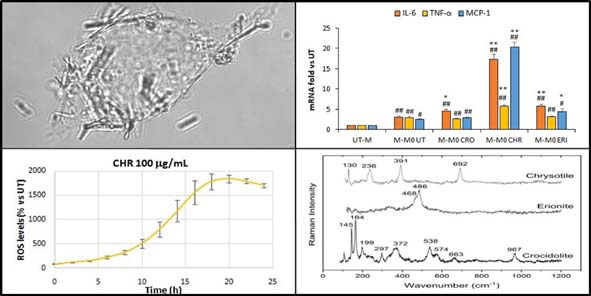Cytotoxic and pro-inflammatory early effects of mineral fibres on human alveolar epithelial and immune cells
DOI:
https://doi.org/10.13133/2239-1002/18082Abstract
When interacting with macrophages and epithelial lung cells, inhaled harmful particles trigger the pro-inflammatory process which, in turn, promotes the recruitment of circulating monocytes at the site of injury and their subsequent differentiation towards a macrophage phenotype. In this study, we evaluated the early cytotoxic and pro-inflammatory effect of three well-known carcinogenic fibres (i.e., crocidolite, chrysotile and erionite) on human THP-1 naïve monocytes and A549 alveolar epithelial cells, mimicking the recruitment and engagement of circulating monocytes at the site of fibre deposition. In both cell lines, all fibres showed significant direct cytotoxicity, with crocidolite and chrysotile inducing a higher time-dependent increase of the oxidative stress respect to erionite. Moreover, the direct exposure to the three fibres prompted the activation of THP-1 naïve monocytes towards the M0 pro-inflammatory phenotype, upregulating the gene expression of differentiation markers and promoting the release of pro-inflammatory cytokines. Finally, we evaluated the differentiation and activation of THP-1 naïve cells in response to conditioned media from fibre-treated A549 alveolar epithelial cells and M0-THP-1 macrophages. Interestingly, the exposure to chrysotile-treated media promoted the highest upregulation of pro-inflammatory mediators, suggesting that the soluble factors secreted in response to this fibre cause a stronger recruitment and activation of naïve monocytes.

Downloads
Published
Issue
Section
License
Copyright (c) 2023 Periodico di Mineralogia

This work is licensed under a Creative Commons Attribution 4.0 International License.

